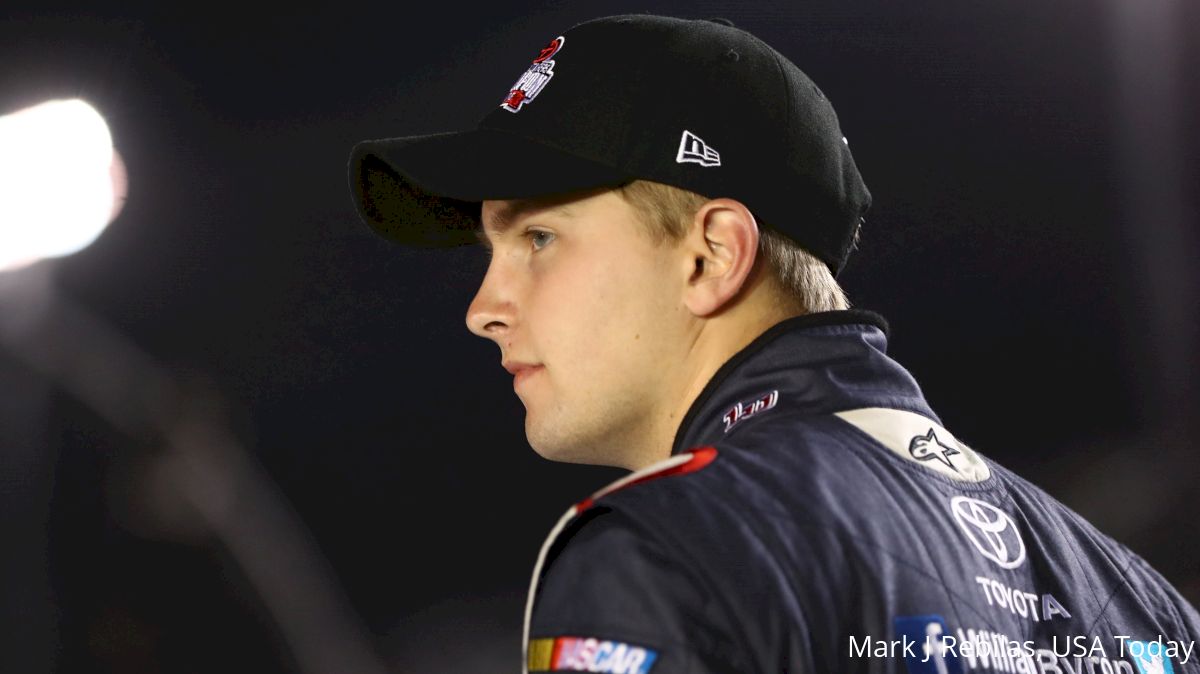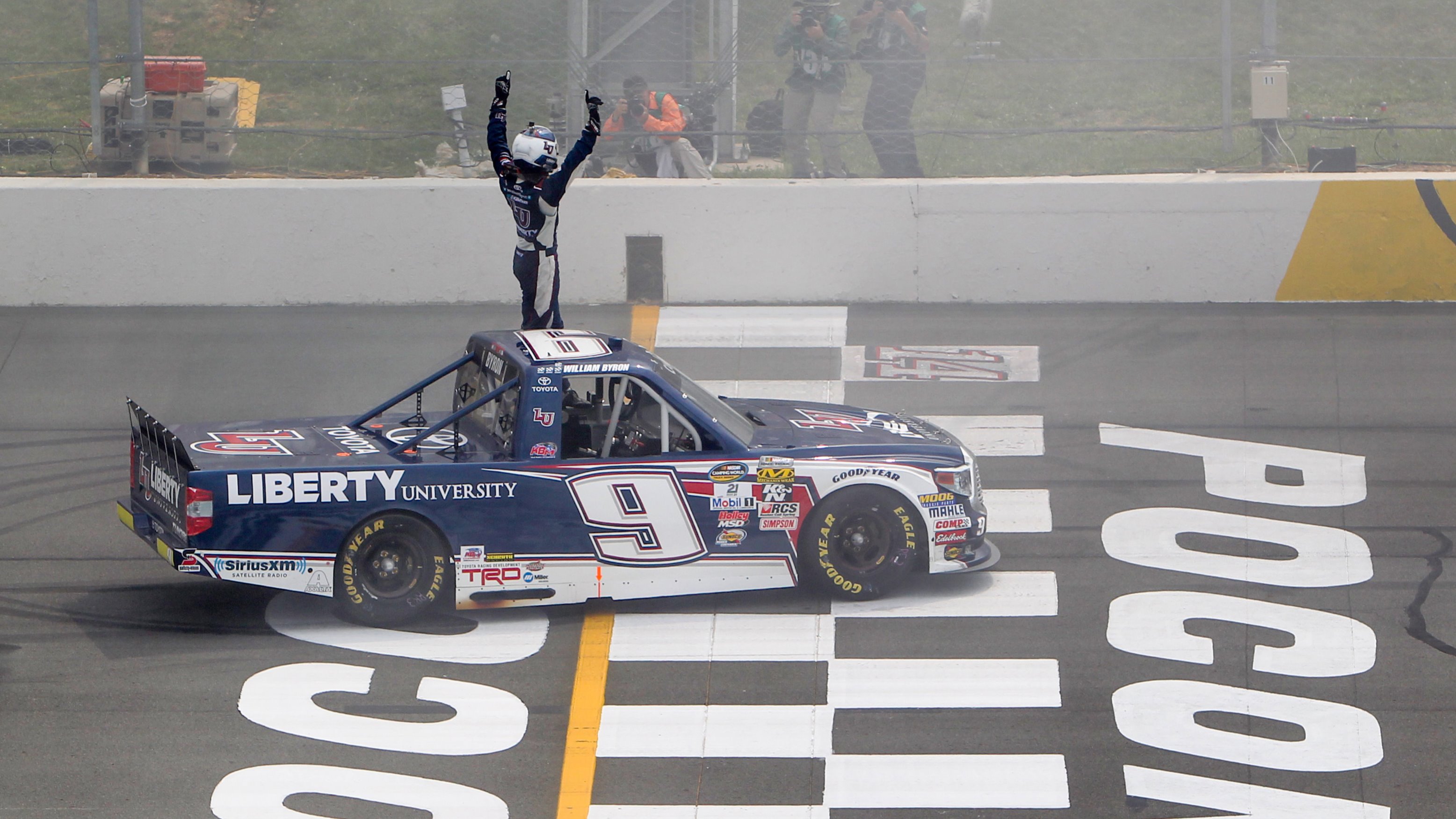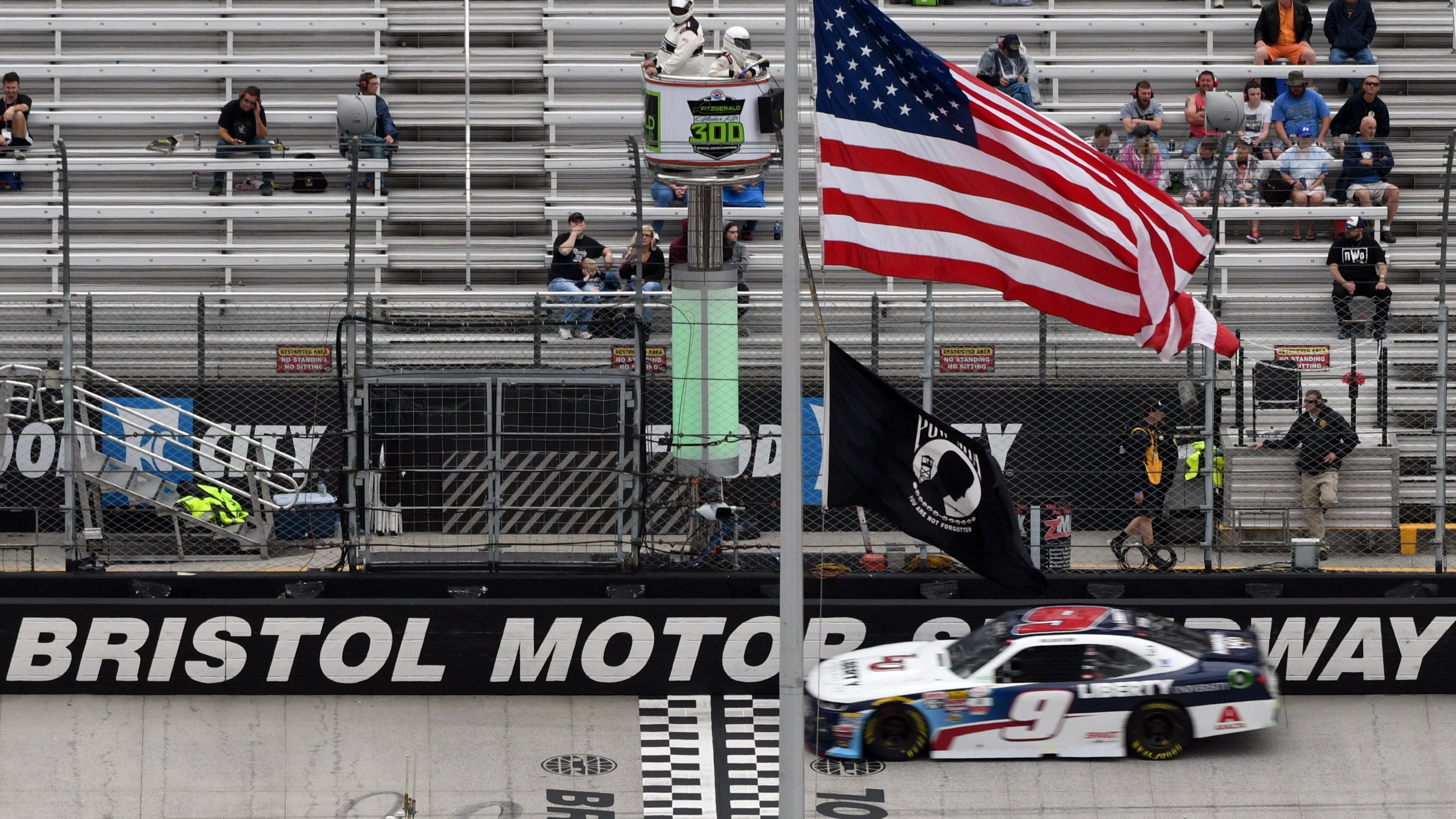As Drivers Vie For Dale Earnhardt Jr's Ride, William Byron Could Be In Line
As Drivers Vie For Dale Earnhardt Jr's Ride, William Byron Could Be In Line
Speculation immediately surrounded who might fill Dale Earnhardt Jr.'s car in 2018 and William Byron's name should be among those discussed.

Given Dale Earnhardt Jr.'s retirement announcement on Tuesday, one of the first questions that arose was who replaces Junior in the No. 88 Hendrick Motorsports Chevrolet next season?
Sure, Earnhardt will drive for the rest of this season -- provided he isn't injured -- but names are already being bandied about on who will fill his firesuit next season, including the likes of Carl Edwards, Matt Kenseth, and Alex Bowman.
Bowman, who split 18 races with Jeff Gordon as injury replacements for Earnhardt in 2016, is still with Hendrick Motorsports as a simulator and test driver.
Other established names already mentioned include Regan Smith, David Ragan, and even former HMS driver Brian Vickers (if he can get a clean bill of health).
But there's one candidate who perhaps makes the most sense of all -- although he may not be ready for Cup-level competition until 2019.
We're talking about William Byron, the 19-year-old standout from Charlotte, North Carolina -- who just happens to be part of the HMS driver development program.
Byron is a real racer. He started his career on short tracks in the Carolinas and surrounding Southeast. He tore through the K&N Pro Series East Series in 2015, winning four races and had 11 top 10s in a 14-race season. He also had two top-five finishes in as many starts in the K&N Pro Series West.
He also won one race and had two other top fives in three starts on the CARS Super Late Model Tour, also in 2015.
Being a master on both dirt and pavement, he was quickly moved into the NASCAR Camping World Truck Series in 2016 and dominated, winning seven races and had 16 top 10s in 23 starts. He likely would have won the championship had it not been for a mechanical failure in the second-to-last race of the season at Phoenix.

William Byron won his fourth career Truck series race at Pocono in July 2016, Photo: Matthew OHaren, USA Today.
Rick Hendrick came calling and signed Byron a year ago, bumping him up to the Xfinity Series this season, where he has flourished with two top fives and three other top 10s. Although he hasn't won yet in seven starts so far, you know it's coming.
Most importantly, he's ranked a close second to points leader Elliott Sadler.
Not bad for a guy who won't be able to buy a beer legally for another 19 months.
Byron has everything he needs for even greater success in NASCAR. He obviously is a top talent, perhaps the best among all young drivers in either the Truck or Xfinity Series today, but one question remains:
Could he handle jumping to the premier NASCAR Cup series as a 20-year-old?
Chase Elliott, who would be Byron's teammate in Cup (along with Jimmie Johnson and Kasey Kahne), moved to the Cup Series in 2016. And while he's performed admirably (13 top fives and 20 other top 10s in a combined 44 starts, including 2017), he still hasn't won a Cup race.
Sure, Elliott has come close, with two runners-ups and five third-place showings, but he still hasn't earned what many thought would be a cinch by now -- potentially even several times over.
Namely, a win.
Byron has the same kind of talent as Elliott, even though he doesn't have a NASCAR Hall of Fame father.
Other young drivers who moved up to Cup at an early age and initially struggled include...
Kyle Larson: He was promoted to Cup by team owner Chip Ganassi at the age of 21. Larson semi-floundered in his first two Cup seasons before earning his first win in his third season this past year, plus another win this season already.
Joey Logano: It's hard to believe Logano is already in his ninth full-time Cup season. He was signed by Joe Gibbs Racing and brought up to the series full-time in 2009 as a mere 18-year-old when Tony Stewart unexpectedly left to join what has become Stewart-Haas Racing. And while Logano had some success at JGR, it wasn't enough to keep team owner Joe Gibbs from cutting him loose in favor of incoming veteran Matt Kenseth in 2013.
Granted, Byron could be the greatest paved short track-to-Cup driver the sport has ever seen. His talent is immense. His maturity, both behind the wheel and in front of fans and the media, harkens to that of a seasoned veteran rather than a mere teenager.

Byron finished 12th in the Fitzgerald Glider Kits 300, Photo: Randy Sartin, USA Today.
And that leaves Hendrick with one hell of a dilemma. The absolute last thing Mr. H wants to do is watch Byron morph into the next Casey Atwood.
Remember him?
Atwood was tabbed by many as the next Jeff Gordon when Gordon's former crew chief, Ray Evernham, signed the then-19-year-old Atwood in 2000 to team with future NASCAR Hall of Famer Bill Elliott in the full 2001 NASCAR Cup season.
By 2003, Atwood had competed in the last of his 75 Cup starts, done at the age of 23. He hung around for a few more years for several Xfinity Series starts, but his NASCAR career was completely over by the time he hit 28.
Instead of a "can't-miss" future Cup star, he became the answer to a "whatever happened to?" question.
To be fair, it wasn't Atwood's fault. He was brought up young and early by Evernham, who had a great deal of faith and belief in him.
But it was pretty clear almost right from the start that Atwood was overmatched and out of his league and comfort zone once he got to Cup.
If he would have had maybe another year or two in the Xfinity Series, he might have gone on to become one of today's top Cup drivers.
But he didn't. Evernham wanted a promising young driver -- and here we go with that same "the next Jeff Gordon" reference -- to pair with Bill Elliott.
Had Atwood declined or told Evernham that he needed at least another year of seasoning in the lower ranks, it's pretty clear what would have happened: Evernham would have said, "see 'ya."
Rather, Atwood took the job because he had no other choice. Otherwise, someone else would have done so, and that's one of the biggest cardinal sins in motorsports: turning down an offer when it's made to you -- even if you're not convinced you're completely up for it.
They don't call them once-in-a-lifetime opportunities for nothing.
On the surface, Byron looks like he could jump to the Cup level. But is he ready?
Maybe the correct answer is to bring in a veteran -- even if it's a journeyman driver -- for one season and then have Byron ready to go in 2019.
Because the last thing Hendrick wants to see is Byron wind up back on an obscure dirt track or paved short track a few years from now, remembering a promising NASCAR career cut short after he was rushed along too quickly.
Sure, Earnhardt will drive for the rest of this season -- provided he isn't injured -- but names are already being bandied about on who will fill his firesuit next season, including the likes of Carl Edwards, Matt Kenseth, and Alex Bowman.
Bowman, who split 18 races with Jeff Gordon as injury replacements for Earnhardt in 2016, is still with Hendrick Motorsports as a simulator and test driver.
Other established names already mentioned include Regan Smith, David Ragan, and even former HMS driver Brian Vickers (if he can get a clean bill of health).
But there's one candidate who perhaps makes the most sense of all -- although he may not be ready for Cup-level competition until 2019.
We're talking about William Byron, the 19-year-old standout from Charlotte, North Carolina -- who just happens to be part of the HMS driver development program.
Byron is a real racer. He started his career on short tracks in the Carolinas and surrounding Southeast. He tore through the K&N Pro Series East Series in 2015, winning four races and had 11 top 10s in a 14-race season. He also had two top-five finishes in as many starts in the K&N Pro Series West.
He also won one race and had two other top fives in three starts on the CARS Super Late Model Tour, also in 2015.
Being a master on both dirt and pavement, he was quickly moved into the NASCAR Camping World Truck Series in 2016 and dominated, winning seven races and had 16 top 10s in 23 starts. He likely would have won the championship had it not been for a mechanical failure in the second-to-last race of the season at Phoenix.

William Byron won his fourth career Truck series race at Pocono in July 2016, Photo: Matthew OHaren, USA Today.
Rick Hendrick came calling and signed Byron a year ago, bumping him up to the Xfinity Series this season, where he has flourished with two top fives and three other top 10s. Although he hasn't won yet in seven starts so far, you know it's coming.
Most importantly, he's ranked a close second to points leader Elliott Sadler.
Not bad for a guy who won't be able to buy a beer legally for another 19 months.
Byron has everything he needs for even greater success in NASCAR. He obviously is a top talent, perhaps the best among all young drivers in either the Truck or Xfinity Series today, but one question remains:
Could he handle jumping to the premier NASCAR Cup series as a 20-year-old?
Chase Elliott, who would be Byron's teammate in Cup (along with Jimmie Johnson and Kasey Kahne), moved to the Cup Series in 2016. And while he's performed admirably (13 top fives and 20 other top 10s in a combined 44 starts, including 2017), he still hasn't won a Cup race.
Sure, Elliott has come close, with two runners-ups and five third-place showings, but he still hasn't earned what many thought would be a cinch by now -- potentially even several times over.
Namely, a win.
Byron has the same kind of talent as Elliott, even though he doesn't have a NASCAR Hall of Fame father.
Other young drivers who moved up to Cup at an early age and initially struggled include...
Kyle Larson: He was promoted to Cup by team owner Chip Ganassi at the age of 21. Larson semi-floundered in his first two Cup seasons before earning his first win in his third season this past year, plus another win this season already.
Joey Logano: It's hard to believe Logano is already in his ninth full-time Cup season. He was signed by Joe Gibbs Racing and brought up to the series full-time in 2009 as a mere 18-year-old when Tony Stewart unexpectedly left to join what has become Stewart-Haas Racing. And while Logano had some success at JGR, it wasn't enough to keep team owner Joe Gibbs from cutting him loose in favor of incoming veteran Matt Kenseth in 2013.
Granted, Byron could be the greatest paved short track-to-Cup driver the sport has ever seen. His talent is immense. His maturity, both behind the wheel and in front of fans and the media, harkens to that of a seasoned veteran rather than a mere teenager.

Byron finished 12th in the Fitzgerald Glider Kits 300, Photo: Randy Sartin, USA Today.
And that leaves Hendrick with one hell of a dilemma. The absolute last thing Mr. H wants to do is watch Byron morph into the next Casey Atwood.
Remember him?
Atwood was tabbed by many as the next Jeff Gordon when Gordon's former crew chief, Ray Evernham, signed the then-19-year-old Atwood in 2000 to team with future NASCAR Hall of Famer Bill Elliott in the full 2001 NASCAR Cup season.
By 2003, Atwood had competed in the last of his 75 Cup starts, done at the age of 23. He hung around for a few more years for several Xfinity Series starts, but his NASCAR career was completely over by the time he hit 28.
Instead of a "can't-miss" future Cup star, he became the answer to a "whatever happened to?" question.
To be fair, it wasn't Atwood's fault. He was brought up young and early by Evernham, who had a great deal of faith and belief in him.
But it was pretty clear almost right from the start that Atwood was overmatched and out of his league and comfort zone once he got to Cup.
If he would have had maybe another year or two in the Xfinity Series, he might have gone on to become one of today's top Cup drivers.
But he didn't. Evernham wanted a promising young driver -- and here we go with that same "the next Jeff Gordon" reference -- to pair with Bill Elliott.
Had Atwood declined or told Evernham that he needed at least another year of seasoning in the lower ranks, it's pretty clear what would have happened: Evernham would have said, "see 'ya."
Rather, Atwood took the job because he had no other choice. Otherwise, someone else would have done so, and that's one of the biggest cardinal sins in motorsports: turning down an offer when it's made to you -- even if you're not convinced you're completely up for it.
They don't call them once-in-a-lifetime opportunities for nothing.
On the surface, Byron looks like he could jump to the Cup level. But is he ready?
Maybe the correct answer is to bring in a veteran -- even if it's a journeyman driver -- for one season and then have Byron ready to go in 2019.
Because the last thing Hendrick wants to see is Byron wind up back on an obscure dirt track or paved short track a few years from now, remembering a promising NASCAR career cut short after he was rushed along too quickly.